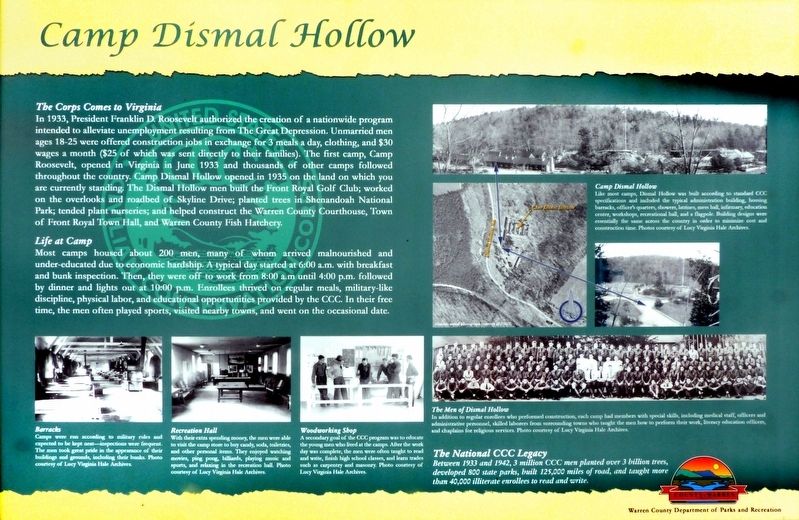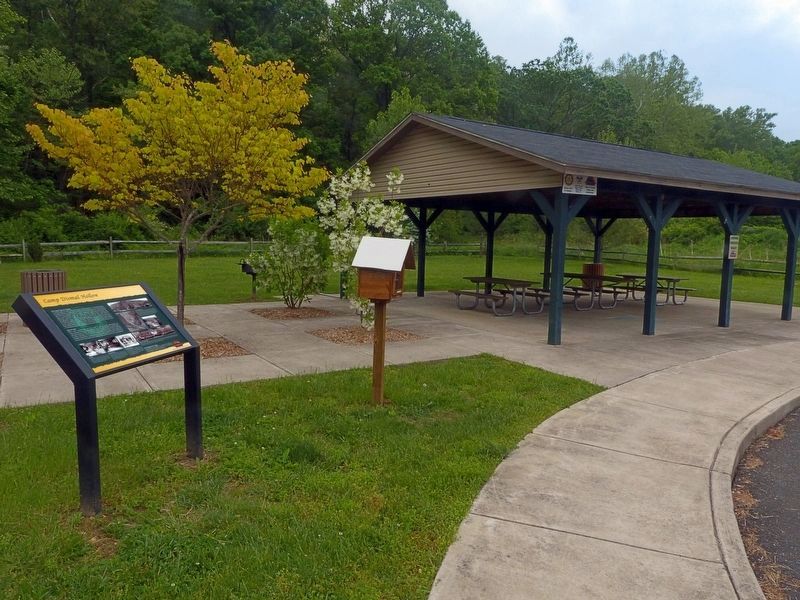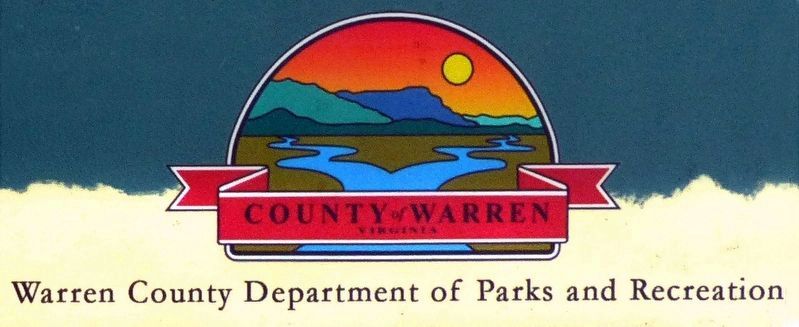Near Front Royal in Warren County, Virginia — The American South (Mid-Atlantic)
Camp Dismal Hollow
The Corps Comes to Virginia
In 1933, President Franklin D. Roosevelt authorized the creation of a nationwide program intended to alleviate unemployment resulting from The Great Depression. Unmarried men ages 18-25 were offered construction jobs in exchange for 3 meals a day, clothing, and $30 wages a month ($25 of which was sent directly to their families). The first camp, Camp Roosevelt, opened in Virginia in June 1933 and thousands of camps followed throughout the country. Camp Dismal Hollow opened in 1935 on the land on which you are currently standing. The Dismal Hollow men built the Front Royal Golf Club; worked on the overlook and roadbed of Skyline Drive; planted trees in Shenandoah National Park; tended plant nurseries; and helped construct the Warren County Courthouse, lawn of Front Royal Town Hall, and Warren County Fish Hatchery.
Life at Camp
Most camps housed about 200 men, many of whom arrived malnourished and under-educated due to economic hardship. A typical day started at 6:00 a.m. with breakfast and bunk inspection. Then, they were off to work from 8:00 a.m. until 4:00 p.m. followed by dinner and lights out at 10:00 p.m. Enrollees thrived on regular meals, military-like discipline, physical labor, and educational opportunities provided by the CCC. In their free time, the men often played sports, visited nearby towns, and went on the occasional date.
National CCC Legacy
Between 1933 and 1942, 3 million CCC men planted over 3 billion trees, developed 800 state parks, built 125,000 mile of road, and taught more than 40,000 illiterate enrollees to read and write.
Erected by Warren County Department of Parks and Recreation.
Topics and series. This historical marker is listed in this topic list: Government & Politics. In addition, it is included in the Civilian Conservation Corps (CCC), and the Former U.S. Presidents: #32 Franklin D. Roosevelt series lists. A significant historical month for this entry is June 1933.
Location. 38° 55.356′ N, 78° 7.388′ W. Marker is near Front Royal, Virginia, in Warren County. Marker can be reached from Dismal Hollow Road (Virginia Route 647) south of Oregon Hollow Road (Virginia Route 603), on the right when traveling north. This marker is in Linden Park. Touch for map. Marker is at or near this postal address: 1759 Dismal Hollow Rd, Linden VA 22642, United States of America. Touch for directions.
Other nearby markers. At least 8 other markers are within 4 miles of this marker, measured as the crow flies. Battle of Manassas Gap (approx. 0.9 miles away); Warren County / Fauquier County (approx. 2.7 miles away); Discovery Shenandoah Valley (approx. 2.7 miles away); Bel Air (approx. 3˝ miles away); Site of Lane's Tavern (approx. 3˝ miles away); Front Royal (approx. 3.6 miles away); Erin Dinner Bell (approx. 3.7 miles away); The Great Seal of the Confederacy (approx. 3.7 miles away). Touch for a list and map of all markers in Front Royal.
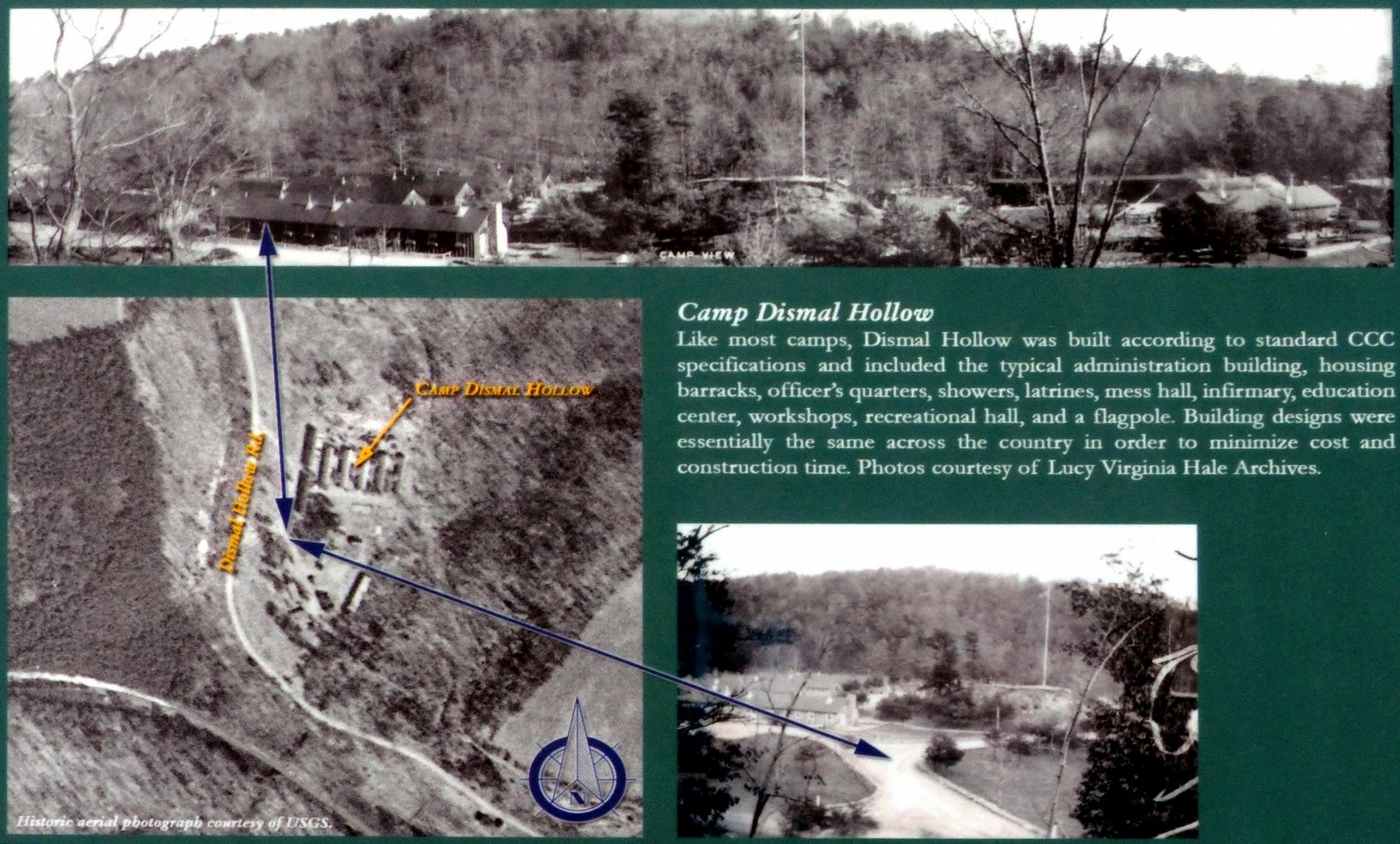
Photographed By Allen C. Browne, May 8, 2019
3. Camp Dismal Hollow
Like most camps, Dismal Hollow was built according to standard CCC specifications and included the typical administration building, housing barracks, officer's quarters, showers, latrines, mess hall, infirmary, education center, workshops, recreation hall, and flagpole. Building designs were essentially the same across the county in order to minimize cost and construction time.Close-up of map and photos on marker
courtesy of Lucy Virginia Hale Archives.
courtesy of Lucy Virginia Hale Archives.

Photographed By Allen C. Browne, May 8, 2019
4. Men of Dismal Hollow
In addition to regular enrollees who performed construction, each camp had members with special skills, including medical stall officers and administrative personnel, skilled laborers from surrounding towns who taught the men how to perform their work, literacy education officers, and chaplains for religious services.Close-up of photo on marker
courtesy of Lucy Virginia Hale Archives.
courtesy of Lucy Virginia Hale Archives.
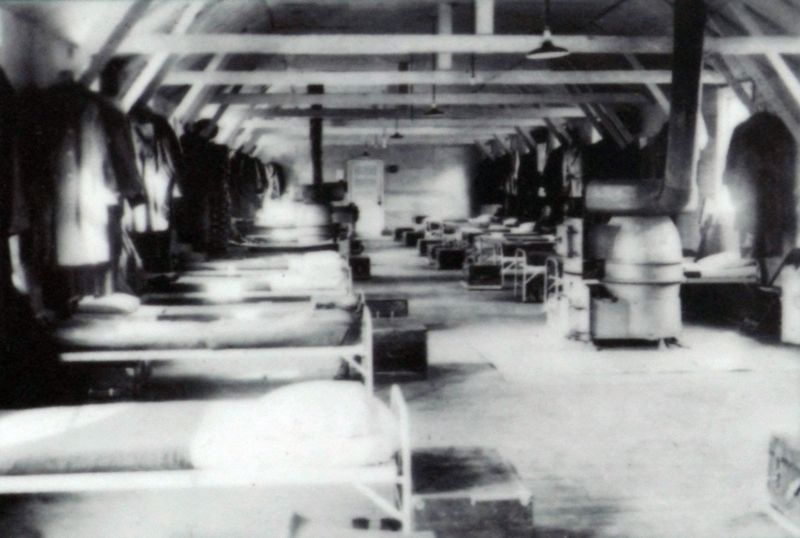
Photographed By Allen C. Browne, May 8, 2019
5. Barracks
Camps were run according to military rules and expected to be kept neat—inspections were frequent. The men took great pride in the appearance of their buildings and grounds, including their bunks.Close-up of photo on marker
courtesy of Lucy Virginia Hale Archives.
courtesy of Lucy Virginia Hale Archives.

Photographed By Allen C. Browne, May 8, 2019
6. Recreation Hall
With their extra spending money, the men able to visit the camp store to buy candy, soda, toiletries, and other personal items. They enjoyed watching movies, ping pong, billiards, playing music and sports, and relaxing in the recreation hall.Close-up of photo on marker
courtesy of Lucy Virginia Hale Archives.
courtesy of Lucy Virginia Hale Archives.
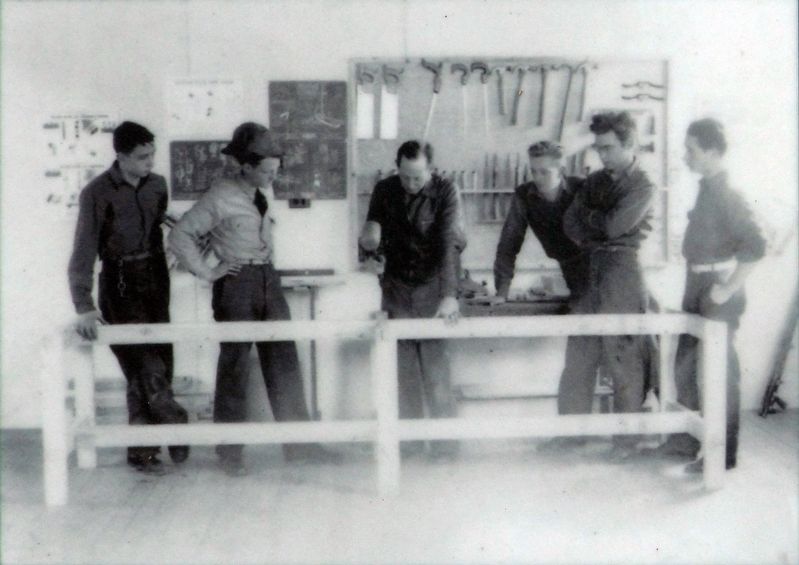
Photographed By Allen C. Browne, May 8, 2019
7. Woodworking Shop
A secondary goal of the CCC program was to educate the young men who lived at the camps. After the work day was complete, the men were often taught to read and write, finish high school classes, and learn trades such as carpentry and masonry.Close-up of photo on marker
courtesy of Lucy Virginia Hale Archives.
courtesy of Lucy Virginia Hale Archives.
Credits. This page was last revised on June 28, 2021. It was originally submitted on May 29, 2019, by Allen C. Browne of Silver Spring, Maryland. This page has been viewed 1,154 times since then and 120 times this year. Photos: 1. submitted on May 29, 2019, by Allen C. Browne of Silver Spring, Maryland. 2. submitted on May 30, 2019, by Allen C. Browne of Silver Spring, Maryland. 3, 4, 5, 6, 7. submitted on May 29, 2019, by Allen C. Browne of Silver Spring, Maryland. 8. submitted on May 30, 2019, by Allen C. Browne of Silver Spring, Maryland. • Bernard Fisher was the editor who published this page.
